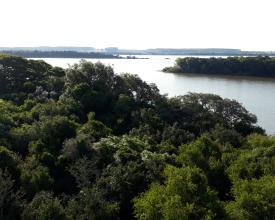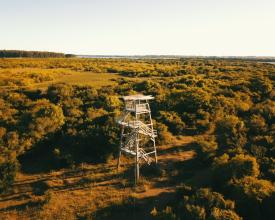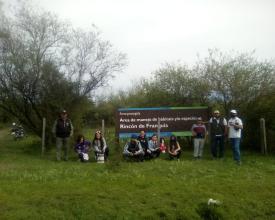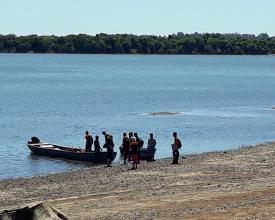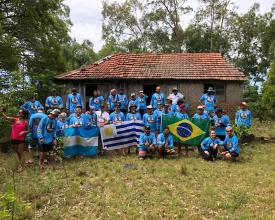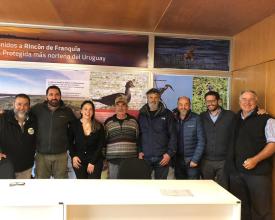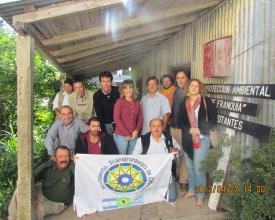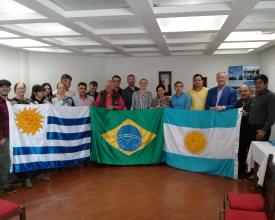
Bella Unión: The community protecting biodiversity to improve its quality of life
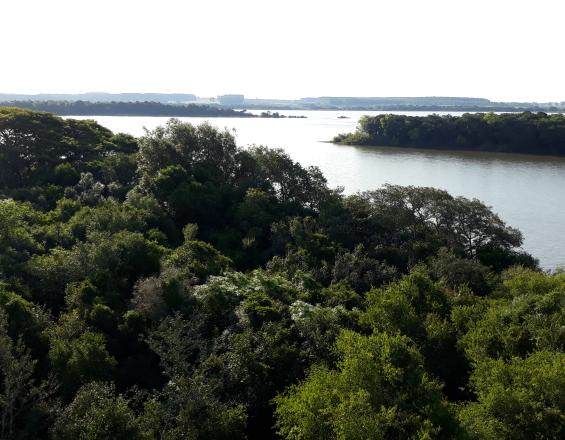
The residents of Bella Unión promoted the creation of a Natural Protected Area in Rincón de Franquía, on the triple border with Argentina and Brazil. The objective was to protect the valuable biodiversity of the area, carry out environmental education to support conservation and develop nature tourism. To this end, they formed a local NGO: GRUPAMA. After a long process, they managed to get the area into the National System of Protected Areas. Now, together with NGOs and local authorities from neighboring cities in Argentina and Brazil, they are seeking to implement a Trinational Biological Corridor. It is hoped that this will allow, in addition to conservation and the enjoyment of the citizens of the area, the creation of a nature tourism offer that will promote post-pandemic economic reactivation. The innovation is given by the protagonism of the CSOs in the whole process, both locally and in the articulation with other NGOs and the authorities to create a transboundary natural protected area.
Context
Challenges addressed
The first environmental challenge was to verify whether the area had sufficient ecological merit. Studies were carried out that demonstrated the area's value and high degree of biodiversity.
The next challenge, social, was to raise awareness among the population by carrying out a permanent environmental education campaign.
Another challenge was to enhance the value of the area, providing it with infrastructure and surveillance. With support from the SGP, this was achieved.
In terms of governance, GRUPAMA proposed co-management of the area with the local authorities and they accepted.
The next challenge was to join the National System of Protected Areas (SNAP), seeking national and permanent protection. This was achieved in 2013 and Rincón de Franquía became the only PNA in the country co-managed by an NGO.
At the same time, a Trinational Biological Corridor is being formed with the Est. do Espinilho Park, Brazil, and a nature reserve planned for Monte Caseros, Argentina.
Location
Process
Summary of the process
In this experience, civil society participation is inextricably linked to local and transboundary biodiversity conservation, which is a continuum that is impossible to separate.
In turn, transboundary protected areas, by increasing the conservation area, make the viability of endangered species more feasible, especially those that need a larger territory to move.
The benefits are not only biological. Transboundary corridors are a space for cooperation and understanding between national and, in the first instance, subnational governments, building consensus among communities at the grassroots level. Such is the case of the CBT, whose idea comes from civil society and is supported by the local governments of the three nearby cities.
Building Blocks
The participation of civil society in co-management
Civil society acts as the driving force and articulator of the biodiversity conservation and nature tourism development proposal.
On the other hand, participation and co-management ensure a broad base of society to implement the proposal.
Local NGOs know the reality and problems of the area and are in horizontal contact with the inhabitants. In addition to identifying the problems, they can and should contribute to their solution.
Enabling factors
In general, civil society maintains continuity of proposals over time, while political actors alternate due to electoral changes.
On the other hand, civil society maintains its focus and centers its interest on the project, while the authorities must attend to a number of issues that dilute their attention.
Notwithstanding the above, CSOs can make contributions in cultural, artistic and sports issues.
Lesson learned
At the beginning, the loss of power implicit in co-management generated some discomfort among political actors. It is difficult to accept the interference of third parties who are not elected by popular vote.
It was also difficult for the representatives of civil society to determine exactly the limits of their powers and not to exceed them.
Pluralism and non-partisan group action, even if each individual maintains his or her own preferences and political activities, has served to reduce the fears of political actors and to gain their respect and that of the community.
Transboundary biodiversity conservation and its governance
The environment is a continuum that is not bound by political-administrative boundaries. Unilateral measures that a country can take to protect a shared resource are generally ineffective and the unregulated use of the resource usually ends in its overexploitation and destruction.
Based on this, biodiversity conservation in areas of high ecological value in border areas should be done on the basis of cooperation and understanding between countries. However, these areas, far from the centers of decision making, are often not a priority for foreign ministries.
In these cases, civil society organizations play an important role, since they can move and articulate with a freedom that governments at different levels do not have.
To be effective, the governance of transboundary protected areas, such as the Tri-national Biological Corridor, requires the involvement of all stakeholders: local, regional and national authorities, entrepreneurs and organized civil society.
Enabling factors
As is the case at the local level, civil society organizations have a continuity over time that political actors do not have.
Moreover, they are not bound by protocol and hierarchy and can communicate directly among themselves and with whomever.
Also, as at the local level, NGOs can focus on environmental issues, unlike the political power, which must deal with a wide range of issues.
Lesson learned
Coordination between NGOs in neighboring countries can be easily accomplished. However, sometimes internal issues in one of the countries, such as an organization's relationship with the authorities in office, slow down or paralyze a cross-border project, or even the opposite.
The addition of NGOs from neighboring countries makes governments pay more attention to the projects in question.
Impacts
An area of important ecological and scenic value is being conserved. Nature tourism is beginning to develop, especially bird watching and nautical tourism, with the consequent generation of jobs. Numerous instances of environmental education and training have been developed.
It has coordinated with NGOs in neighboring countries and formed the Transboundary Movement of Environmental NGOs of the Triple Border. This organization, in addition to fighting for environmental conservation, seeks understanding and cooperation between sister countries and promotes the creation of the Tri-national Biological Corridor.
Beneficiaries
The community enjoys a natural space. The protection of biodiversity and its ecosystem services benefits society as a whole.
Tourism improves the income of SMEs and the Tri-national Biological Corridor will enhance it.
Sustainable Development Goals
Story
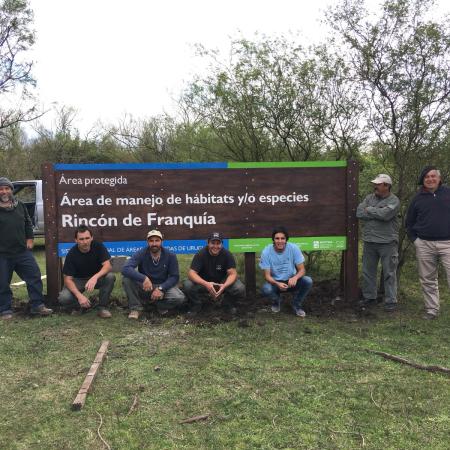
In 2004, a group of neighbors from Bella Unión began to worry about the degradation that was affecting the riparian forests in the Rincón de Franquía area, on the Triple Border with Argentina and Brazil.
We began to meet and developed a project to create a Natural Protected Area with the objective of conserving biodiversity, promoting environmental education and encouraging the development of sustainable nature tourism in the area.
Subsequently, we gave ourselves the name of Grupo para Protección Ambiental Activa(GruPAmA) and presented the project to the rest of the community and the authorities, obtaining their support.
The UNDP Small Grants Program supports the start of the project. Actions include hiring a park ranger and building minimal infrastructure. Reforestation with native species along the Uruguay River has also begun.
In addition, in alliance with the University and "Aves Uruguay", an in-depth diagnosis of the area (delimitation and characterization, flora and fauna survey and socioeconomic study) was carried out, which objectively determined the conservation merits of the area and the social acceptability of the proposal, which led GruPAmA to apply for Rincón de Franquía to be included in Uruguay's National System of Protected Areas (SNAP). This was the first time that a request came from the community. In April 2013, Decree 121/013 was signed declaring Rincón de Franquía a Natural Protected Area. GruPAmA is currently the first civil society organization to co-manage an ANP.
GruPAmA is also an active member of the Transboundary Movement of Environmental NGOs of the Triple Frontier, within which it promotes the creation of a Tri-national Biological Corridor (CBT), which integrates the Espinilho Park in Brazil, the mouth of the Miriñay River in Argentina, the islands in the Uruguay River and Rincón de Franquía.
It was with great pride that we saw our proposal begin to become a reality and its scaling up.
